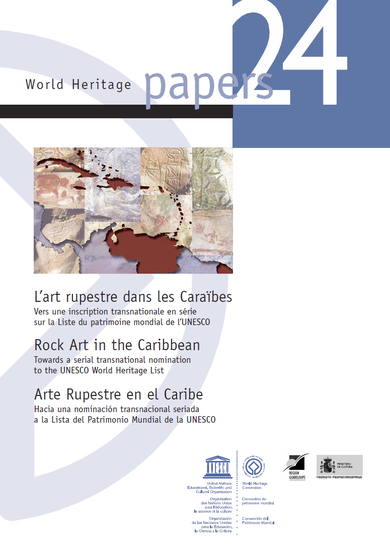The purpose of this publication is to report the results of the meeting organized by the World Heritage Centre and the Regional Council of Guadeloupe in May 2006 on the possibility of submitting a transnational serial nomination for the UNESCO World Heritage List. The meeting was the natural continuation of a process of reflection initiated in 2003 when, in Santo Domingo (Dominican Republic), within the framework of the Global Strategy, the reasons why the archaeological heritage of the Caribbean was absent from the World Heritage List were first examined.
The meeting in Fort-de-France, Martinique, in September 2004, gave rise to reflection on the role of archaeological methodology in revealing the outstanding universal values of the cultures of the Caribbean. A series of cross-cutting themes were selected on that occasion: pre-Columbian Amerindian archaeology, rock art, the contact period, the African heritage in the Caribbean and the cultural landscapes, all of which are major topics for future international collaboration on clear unifying themes.
With a view to putting into practice the principles and philosophy of the Declaration of Martinique and its associated Action Plan, we shall present here the advances made in the international reflection taken up in Basse-Terre, Guadeloupe, on Caribbean rock art, starting by placing the Caribbean proposal in a broader context – that of the rock art nominations already included in the World Heritage List or the Tentative Lists of the States Parties to the Convention – in order to create an overall, universal framework for analysis in which the artistic expressions of the so-called peoples without a written language have been chosen by the international community as sites of outstanding universal value.











